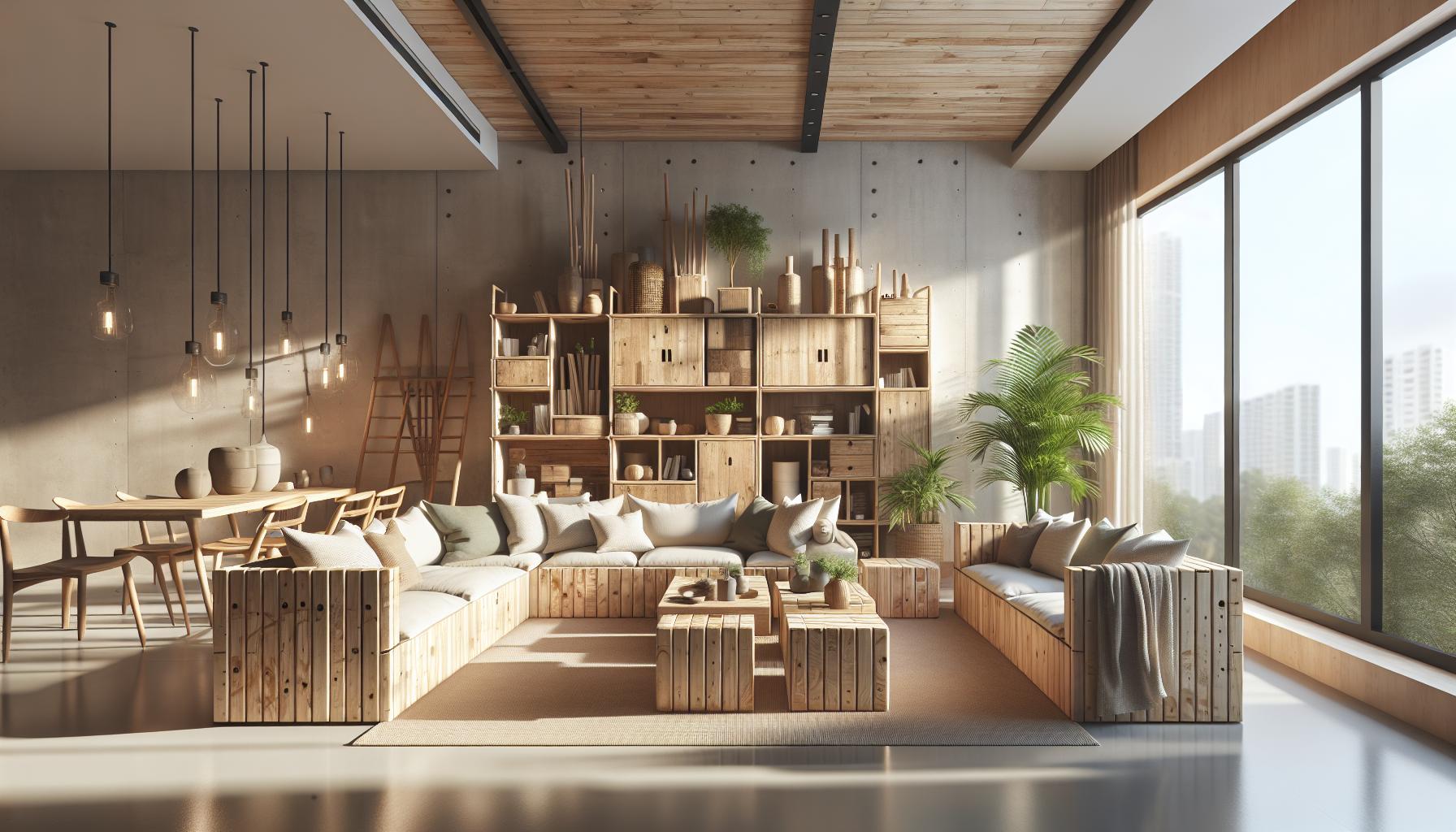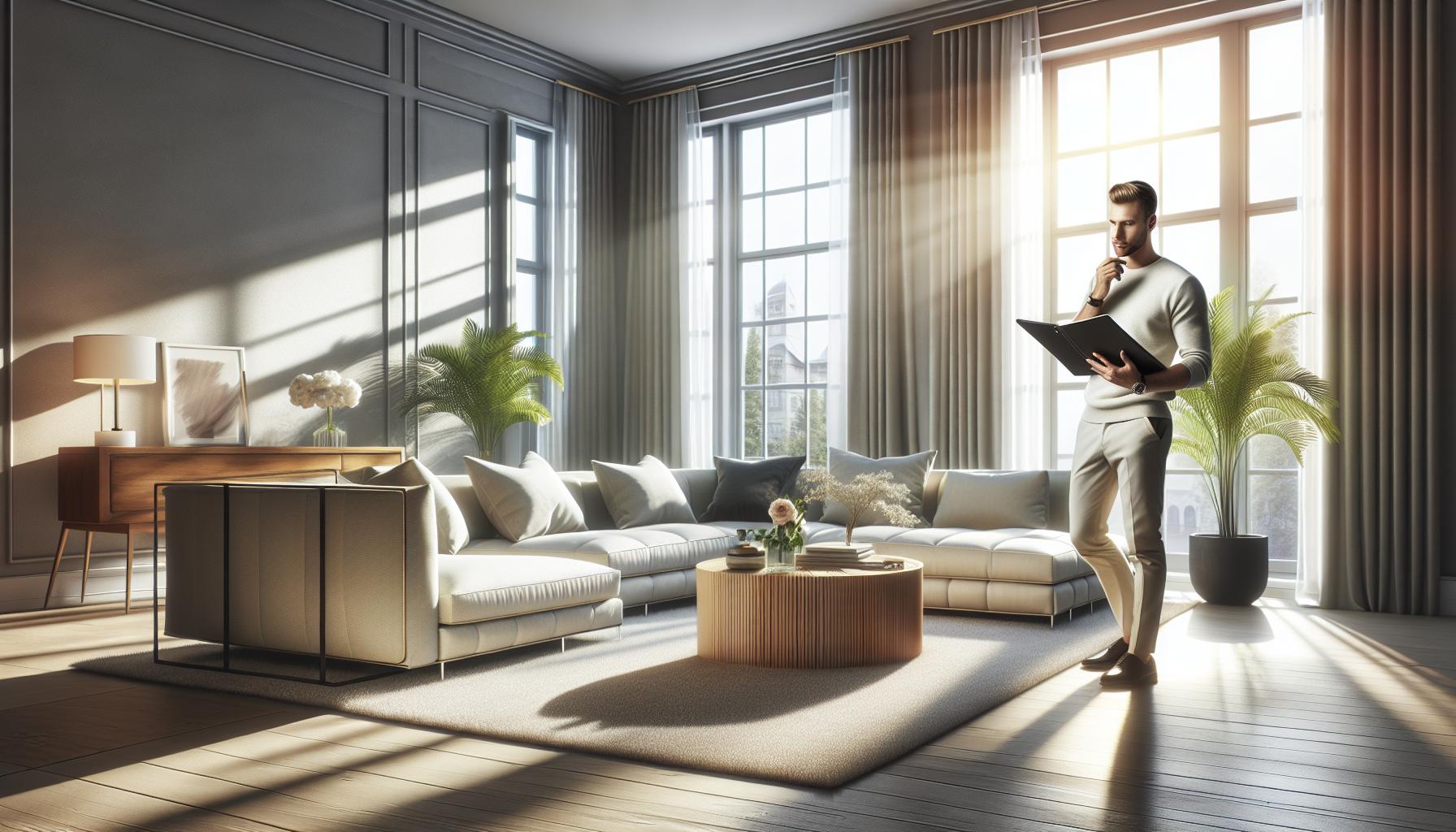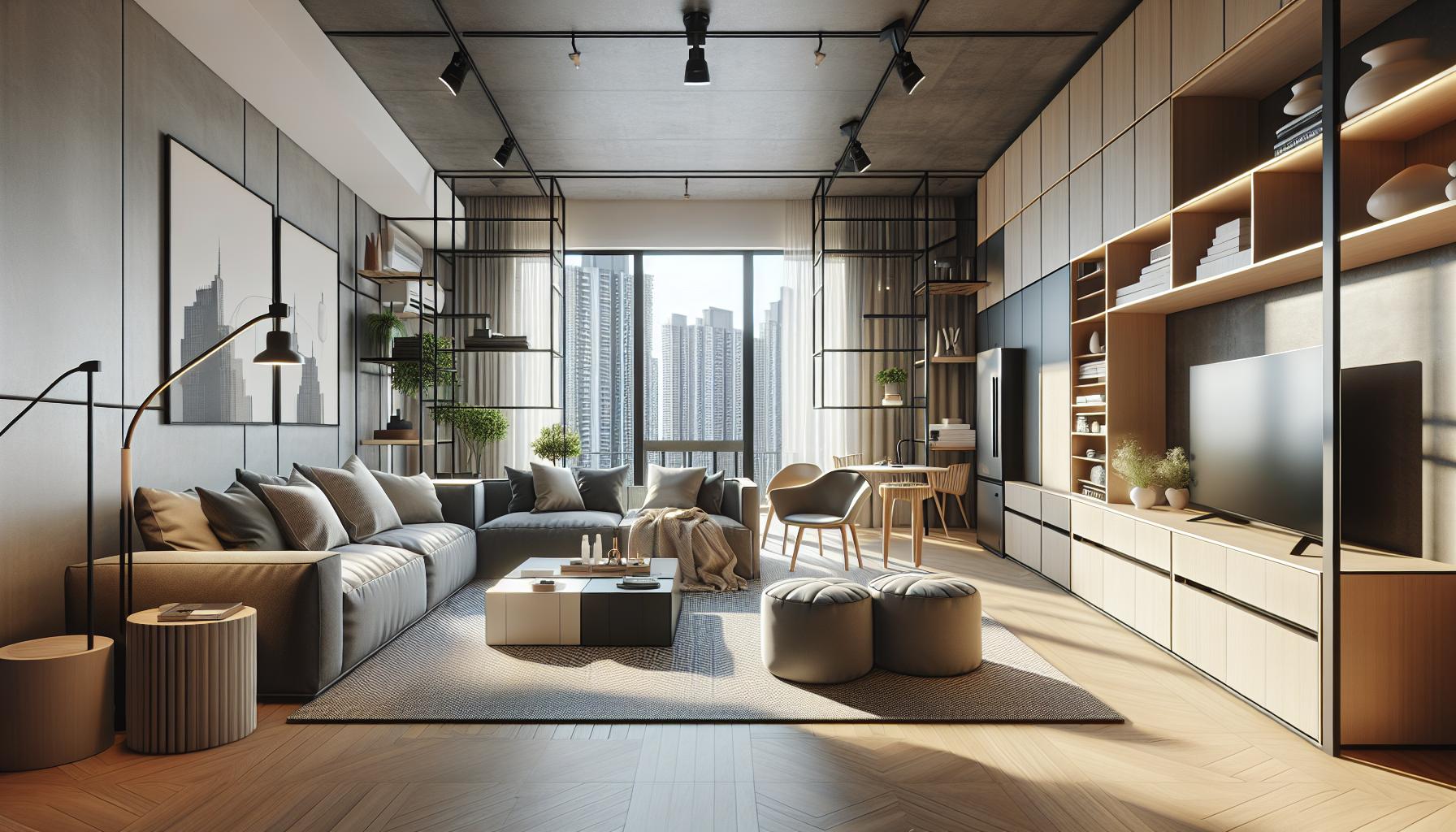When it comes to creating a space that truly feels like home, furniture and design play a pivotal role. I’ve always believed that the right pieces can transform any room, turning it into a sanctuary that reflects your personality and lifestyle. From choosing the perfect sofa to selecting the ideal color palette, every decision shapes the atmosphere of your living space.
In this article, I’ll explore the latest trends in furniture and home design, sharing insights that can inspire your next decorating project. Whether you’re a seasoned designer or just starting to make your space your own, there’s something here for everyone. Let’s dive into the world of home design and discover how to enhance your living environment with style and functionality.
Key Takeaways
- Furniture Selection is Key: Choosing the right furniture significantly impacts both the functionality and aesthetic appeal of your living space, ensuring it reflects your personal style while meeting practical needs.
- Prioritize Functionality: Opt for multifunctional furniture, such as storage solutions and flexible designs, to maximize usability and organization within your home.
- Stay Updated on Trends: Incorporate current design trends, such as sustainable materials and minimalist aesthetics, to create a modern, stylish, and environmentally conscious living space.
- Understand Color Psychology: Be mindful of how different colors affect mood; selecting the right palette can enhance the emotional atmosphere of a room.
- Assess Your Space: Before making furniture selections, evaluate the dimensions and layout of your rooms to ensure an effective and harmonious design.
- Add Personal Touches: Infuse your home with individuality by including personal items and unique decor that tell your story, fostering a true sense of home.
Furniture and Home Design
Furniture and home design play crucial roles in shaping an individual’s living space. Thoughtful selections create environments that embody personal style and enhance functionality. Key elements include furniture pieces, color schemes, layouts, and decorative accents.
Importance of Furniture
- Functional Furniture: Functional furniture serves practical needs. Examples include sofas, dining tables, and storage solutions.
- Aesthetic Appeal: Aesthetic appeal influences a room’s atmosphere. Design styles like modern, traditional, and minimalist offer various visual options.
- Comfort and Usability: Comfort and usability ensure spaces feel inviting. Ergonomic designs prioritize health and satisfaction.
Home Design Trends
- Sustainable Materials: Sustainable materials emphasize eco-friendliness. Bamboo, reclaimed wood, and recycled metals are popular choices.
- Multifunctional Spaces: Multifunctional spaces cater to modern lifestyles. Foldable furniture and convertible sofas maximize usability.
- Smart Home Integration: Smart home integration enhances convenience. Smart lighting, thermostats, and security systems improve daily living.
Color and Layout
- Color Psychology: Color psychology affects mood. Warm colors like reds and yellows create energy, while cool colors like blues and greens offer tranquility.
- Open Floor Plans: Open floor plans promote flow and engagement. Living areas blending with kitchens create spaciousness and connectivity.
- Zoning Techniques: Zoning techniques define distinct areas within a space. Rugs, furniture arrangements, and lighting can delineate living, dining, and working zones.
Conclusion
Furniture and home design combine to create unique environments that reflect individual preferences. The careful selection of materials, styles, and layouts contributes to comfortable and aesthetically pleasing living spaces.
Key Trends in Furniture and Home Design

Current trends in furniture and home design reflect a shift toward sustainability and minimalism, creating functional spaces that align with modern lifestyles. These trends blend aesthetics and practicality, enhancing the overall living experience.
Sustainable Materials
Sustainable materials play a vital role in contemporary furniture and home design. Options like bamboo, recycled metals, and reclaimed wood minimize environmental impact while providing durability. Brands that focus on eco-friendly practices find a growing audience, as consumers prioritize sustainability. Certifications like FSC (Forest Stewardship Council) ensure the ethical sourcing of materials, promoting responsible production methods. With an increase in awareness, using sustainable fabrics, such as organic cotton and linen, adds to the appeal, combining ethics with style.
Minimalist Aesthetics
Minimalist aesthetics continue to gain traction, emphasizing clean lines and uncluttered spaces. This design philosophy enhances functionality while promoting tranquility. Neutral color palettes, including whites, grays, and soft earth tones, dominate, allowing for various accent colors and textures. Furniture designed with multifunctionality—like storage ottomans and extendable dining tables—maximizes space without sacrificing style. The focus shifts from excess to essential pieces, creating an inviting environment that fosters relaxation and creativity.
Choosing the Right Furniture

Choosing the right furniture enhances functionality and reflects personal style. It’s essential to consider the space and individual preferences to create a harmonious living environment.
Understanding Your Space
Understanding the dimensions and layout of my space lays the foundation for selecting appropriate furniture. I measure each room, noting doorways, windows, and electrical outlets to ensure optimal arrangement. I consider traffic flow for easy navigation, avoiding overcrowding while maintaining an inviting atmosphere. Utilizing 3D design software or apps simplifies visualizing potential layouts, allowing for adjustments before purchase. Additionally, I analyze natural light sources to select pieces that complement the setting, enhancing aesthetic appeal and functionality.
Personal Style Preferences
Personal style preferences significantly influence furniture choices. I identify my design aesthetic, whether it’s modern, rustic, or eclectic, to guide selections. I examine existing color schemes and decor to ensure cohesion. For example, I might incorporate bold accent pieces in an otherwise neutral room to create focal points. I also explore fabrics and textures, balancing comfort with visual interest. Prioritizing quality over quantity allows me to invest in timeless items that maintain their appeal over years, ensuring my space remains stylish and functional.
Importance of Functionality

Functionality stands at the core of effective furniture and home design. Functional furniture enhances the usability of a space, ensuring that it serves its intended purpose while accommodating daily activities. Space-efficient designs optimize room layouts, enabling me to make the most of limited square footage in urban environments.
Choosing furniture with storage solutions, such as ottomans with hidden compartments or coffee tables that double as shelving units, allows for organization without sacrificing style. This approach not only declutters my living space but also provides easy access to everyday items.
Flexible furniture pieces, including foldable tables and modular sofas, adapt to shifting needs and entertain diverse lifestyles. These adaptable solutions support a dynamic home environment, facilitating everything from quiet evenings at home to lively gatherings with friends.
Incorporating multifunctional designs contributes to the overall functionality of a space. Reinventing traditional furniture roles proves effective; for example, a bed that converts into a workspace enhances utility while maximizing the room’s potential. Such choices promote efficiency and encourage an harmonious living experience that aligns with how I live.
Ultimately, prioritizing functionality in furniture and design fosters a balanced, inviting atmosphere. A home that is both practical and aesthetically pleasing reflects my personal style, allowing for comfortable living while accommodating the diverse needs of daily life.
Tips for Effective Home Design
- Assess Your Space: I evaluate the dimensions and layout of my rooms. Understanding traffic flow and natural light helps in planning an effective design.
- Define Your Style: I identify my personal style before making selections. Whether it’s modern, rustic, or eclectic, my choices should reflect my preferences.
- Choose Functional Furniture: I prioritize multipurpose furniture that enhances usability, especially in smaller spaces. Look for storage ottomans or modular units.
- Incorporate Color Psychology: I consider how colors impact mood. Soft blues and greens create calm, while bright yellows stimulate energy. My color palette sets the emotional tone of my home.
- Opt for Sustainable Materials: I select eco-friendly options like reclaimed wood or bamboo. Sustainable materials contribute to a healthier environment and often offer unique aesthetics.
- Focus on Comfort: I ensure that my furniture choices are comfortable. A cozy sofa or supportive chair invites relaxation and enhances my enjoyment of the space.
- Mix Textures and Patterns: I combine different textures and patterns to add depth. Fabrics like velvet, leather, and linen together create a visually appealing and tactile experience.
- Use Lighting Strategically: I implement varied lighting sources, including ambient, task, and accent. Right lighting highlights key features and enhances the overall atmosphere.
- Include Personal Touches: I add personal items like artwork or family photos. Combining these elements fosters a sense of identity within my space.
- Plan for Flexibility: I adapt my designs to accommodate changing needs. Incorporating repositionable furniture or movable partitions allows for easy reconfiguration as my lifestyle evolves.
Choosing Pretty Furniture
Creating a home that truly reflects who I am involves more than just choosing pretty furniture. It’s about finding the perfect balance between style and functionality. I’ve learned that thoughtful design can transform any space into a sanctuary that meets my needs and resonates with my personality.
Embracing current trends like sustainability and minimalism not only enhances my living environment but also aligns with my values. By prioritizing quality pieces and incorporating smart design principles, I can ensure my home remains inviting and adaptable to my evolving lifestyle.
Ultimately, my home should be a canvas that showcases my journey and creativity while providing comfort and practicality. I’m excited to continue exploring new ideas and trends that inspire me to elevate my space even further.

